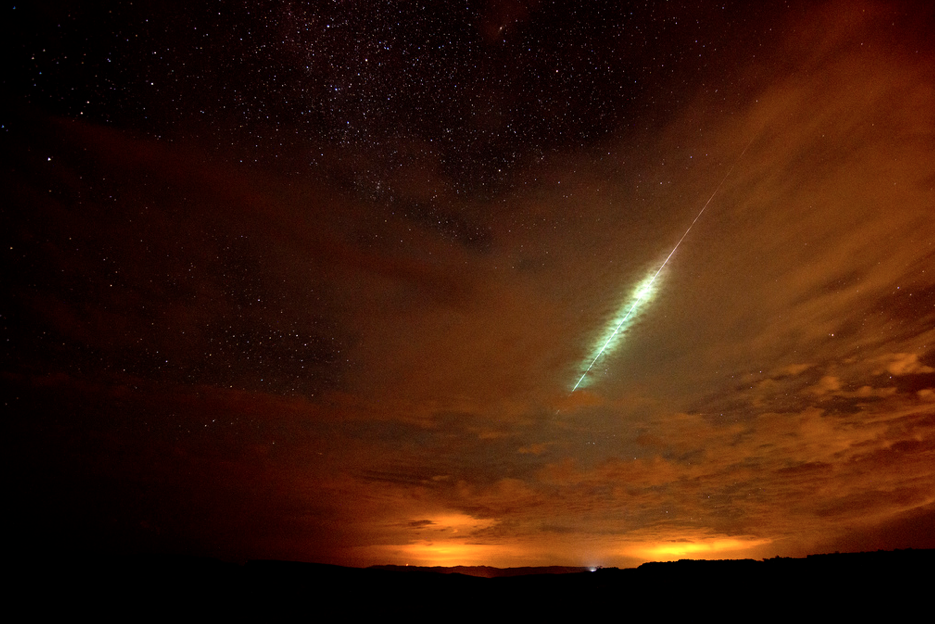We're open daily! View holiday hours
Science News
Viewing the 2014 Perseids
August 8, 2014
by Bing Quock

In 1992, Comet 109P/Swift-Tuttle passed through the inner solar system, looping around the Sun and releasing a stream of dust particles along its path. All comets do this, and in the case of Swift-Tuttle, this has been happening every 133 years. When Earth passes through this particular stream every August, plowing through the dust trail, particles (as small as sand grains or as large as peas) enter our atmosphere at speeds as great as 45 miles per second. This makes them heat up and incinerate in bright streaks of light called “meteors,” known to some as “shooting stars.”
On most normal nights, observers may see between four and six sporadic, or random, meteors per hour, but when Earth passes through a comet’s dust trail, the resulting meteor shower may produce up to a tenfold increase during the peak of activity. From the ground, the streaks of light caused by Comet Swift-Tuttle’s plummeting particles appear to radiate from the constellation Perseus the Hero, so the shower is named the Perseid shower. At its peak, observers may see 60-80 meteors per hour under ideal conditions (i.e., with clear weather, from a high vantage point, and away from city lights), making the Perseid shower one of the best meteor displays of the year.
However, viewing conditions in 2014 aren’t quite ideal, and the reason is the phase of the Moon. The monthly waxing and waning of our natural satellite tends to be a problem for astronomers interested in observing anything other than the Moon itself. This year’s Perseid peak occurs only two days after a full moon, and during brighter phases, prospects for seeing meteors dim. During the week before and after full moon, the Moon is bright enough to wash many faint objects from view… including most meteors.
That doesn’t make the Perseid shower a complete washout for 2014, as this display produces some bright, colorful, and fast-moving fireballs, some appearing early in the evening and leaving long trails behind them. With a relatively slow build-up to its peak and a rapid drop-off afterward, the Perseids usually put on a good show, a fantastic summertime event that occurs during short, warm nights, and even with the bright light of a just-past-full moon, some brighter meteors may still be visible, peaking late night August 12th and early morning August 13th, though observers may notice gradually greater-than-average numbers of meteors starting a few nights before.
To optimize one’s chance of seeing meteors, you should keep your fingers crossed for clear weather! Beyond that, astronomers advise observing between midnight and dawn, when our side of Earth is turning into the dust-cloud swarm. Viewing locations should be unobstructed—ideally from a high vantage point. Binoculars or telescopes are unnecessary, since you want to have as wide-angle a view of the sky as possible. Although the usual advice is also to get away from city lights, that may not be quite as critical with a bright moon in the sky during this year’s peak, but it does reduce the overall skyglow and increase the contrast between meteors and the sky background. In fact, a handy tree that blocks the Moon from view but permits a view of the rest of the sky may even help.
With patience and the right viewing conditions, meteor-watching can be a fun activity for a clear summer night as a celestial sprinkling of comet dust lights up the sky. Good luck!
Bing Quock is the assistant director of the Morrison Planetarium.
Image: John Fowler/Flickr